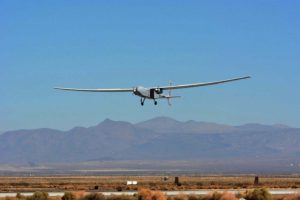Anyone who still considers the idea of point-to-point, on-demand air taxis too futuristic to merit serious thought may want to rethink such a notion. A market for urban air transportation is emerging—effectively airborne versions of Uber and Lyft—and it is probably closer than most people realize.
Proof-of-concepts of air vehicle designs, batteries, autonomous systems, and other technologies currently are being tested in national air space to flesh out the state of the art. This will lead to a “minimum viable product” by 2020, according to John Langford, President and founder of Aurora Flight Sciences, a Boeing company. As Langford sees it, an operational system would make its debut in the mid-2020s.
More than 50 companies are trying to build such a vehicle, but only large systems integrators with deep pockets are likely to succeed, since the cost will be sizable. But so will the potential rewards. Investment banking firm Goldman Sachs estimates an air taxi market would be valued around $70 billion annually, which would eclipse general aviation.
“It’s a matter of ‘when,’ not ‘if,’ he asserted. Recent developments in hybrid electric technologies, the refinement of the traditional air charter model, and the growing involvement of innovators, entrepreneurs, major aerospace companies, and venture capitalists strongly suggest that time effectively has arrived.
The market is still not well defined and could include concepts from single-passenger autonomous vehicles to business jets morphing from charter operations. But this much is certain: regional air mobility and urban air transportation demand will grow as personal and business time become more valuable, which in turn will drive demand worldwide.
The concept is that air taxis will become rural-urban connectors for IOT (Internet of Things)-based smart cities, as well as intra-urban connectors. They will do this by taking advantage of the 10,000-plus airports across the U.S., while vertical-takeoff-and-landing (VTOL) air taxis will have virtually an infinite number of operating points. In addition to the many initiatives underway to perfect an air vehicle design, a great deal of effort also is being paid to developing the air traffic management and infrastructure that will be needed.
Of the major aerospace companies involved, Boeing and Airbus are in the vanguard. This in itself should convey a high level of credence for two reasons: Despite the conservative, risk-averse nature of aerospace companies in general, the large systems integrators see air taxis as the next major evolution in commercial air transportation, and second, every aerospace enterprise of any significance is aggressively pursuing future revenue growth globally in both traditional and non-traditional markets.

In one of its most strategic acquisitions since the company absorbed McDonnell Douglas in 1997, Boeing last year purchased Aurora Flight Sciences, a leading developer and manufacturer of unmanned aerial systems and aerospace vehicles. If ever there were a visionary company on the cutting edge of 21st century technologies essential to the development of future generations of manned and unmanned aircraft, Aurora is it.
“Boeing is pursuing this very seriously and is getting ready to sell flying taxis,” said Langford.
It should come as no surprise that Uber wants to participate in what’s unfolding, as does Dubai’s Roads and Transport Authority, among others. Neva Aerospace, a UK-based developer of electric ducted fans and VTOL unmanned aircraft is developing an electric vertical-takeoff-and-landing (eVTOL) vehicle it unveiled last year,
If the concept of on-demand air taxis still seems a bit much to process, consider the disruption that has been taking place across aviation/aerospace—indeed the transportation industry in general—in recent years.
It wasn’t that long ago that the idea of space tourism seemed too silly to take seriously. Within the next 12 to 18 months, expect to see inaugural flights by at least one three competitors: Blue Origin, an Amazon company; SpaceX; and Virgin Galactic, part of the Virgin Group, and Boeing. Onboard will be paying passengers who will travel to the edge of space (more than 62 miles altitude). A 2012 study by the Tauri Group titled “Suborbital Reusable Vehicles: A Ten-Year Forecast of Market Demand” estimates 40 percent of the interested high-net-worth population (about 3,600 individuals) would fly within the first 10 years of space tourism becoming operational.
The proliferation of autonomous unmanned systems for an array of civil uses is another emerging market, with package delivery service already in beta testing. Battery-powered vehicles are a reality and expanding—some major carmakers have announced they plan to phase out the production of internal combustion engines within the next 15 years. And now there’s the emergence of on-demand urban air transport, distinct from traditional rotorcraft, which Langford said is not well suited to the same role due to noise, cost and safety issues.
Solving all of the technology issues may turn out to be the easier part, because commercial success will hinge at least as much on the right business model. Thus, we should expect to see a proliferation of Uber-type service providers that understand how to capitalize on the convergence of technology, market demand and what seems to be a cultural readiness to embrace this new era in air transportation unlike anything the traveling public has seen previously.
If any one of these three imperatives were not part of the equation, the on-demand air taxi market would remain little more than a fanciful notion. But that’s not the case, as Langford recently made clear.
Perhaps the two most intriguing questions is who will introduce the first viable operation and where will it get started? The first-to-market will be a mixed blessing. If their business strategy is perfectly executed, financial backers and aerospace suppliers will have established important momentum. But perfect execution may be a stretch, which means that follow-on ventures will learn from the mistakes of the trailblazers.
